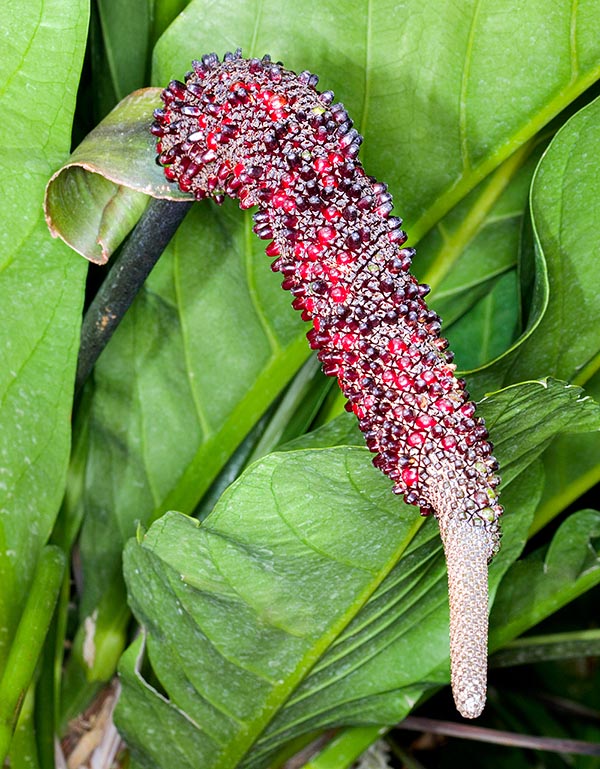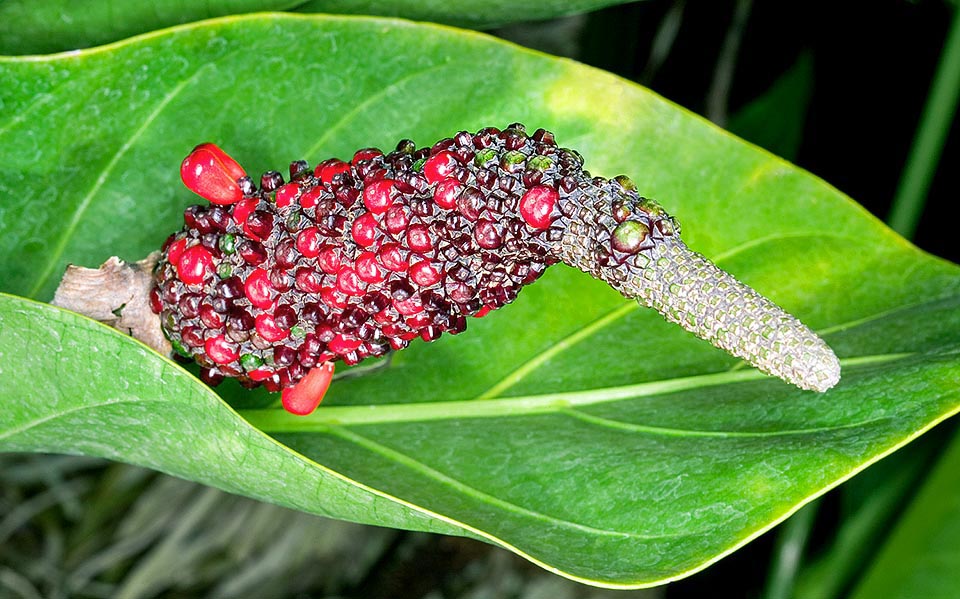Family : Araceae

Text © Pietro Puccio

English translation by Mario Beltramini

Anthurium hookeri is a big epiphyte native to Central America © Giuseppe Mazza
The name of the genus is the combination of the Greek words “anthos” = flower and “oura” = tail, with reference to the spadix of the inflorescence; the species is honoured to the English botanist William Jackson Hooker (1785-1865).
Common names: “bird’s nest anthurium”, “birdsnest flamingo flower”, “wild tobacco” (English); “anthurium nid d’oiseaux”, “anthurium feuille de choux” (French).
Epiphytic evergreen herbaceous of great size, tall up to about 1,5 m and 2 and more metres broad, with a short stem with close internodes, from which several aerial roots develop and a rosette of pale green leathery, obovate – oblanceolate leaves, which can reach, in the best cultivating conditions, a length of about 1 m and a breadth of 40 cm, on short petioles (2-9 cm long); the central and lateral venations are marked and of a pale green colour.
Axillar inflorescences, on an erect peduncle long about 45 cm, formed by a greyish or pale green spathe, about 8 cm long and 2 cm broad, tending to the purple and by a violet spadix, 10-15 cm long, on which are spirally wrapped small protogynous hermaphrodite flowers (the female part, the stigma, is receptive before the stamens are ripe, thus avoiding self-fertilization).
The fruits are ovoid berries, about 6 mm long, of a whitish colour with purple shades. It usually propagates by seed, germinating on the surface of porous substrata, kept constantly humid, in warm greenhouse.
Very ornamental plant, it can be cultivated in open areas in tropical and humid subtropical zones in shaded position and sheltered from the winds, which would harm its great leaves, on organic, porous, and draining substrata, kept constantly humid; the cultivation, in sheltered locations, in the warm temperate climate zones, can be tried, as it can bear, for short periods, temperatures around the 0°C, but with damage or loss of the foliage.

Close up of the spadix with fruits. As pot plant has great effect in the decoration of indoor locations © Giuseppe Mazza
All parts of the plant contain toxic substances, in particular, calcium oxalate, which can cause irritations.
Synonyms: Pothos acaulis Dryand. (1810); Pothos crassinervius Hook. (1830); Anthurium amplum Kunth (1841); Anthurium neglectum Miq. (1853); Anthurium varians Miq. (1853); Anthurium huegelii Schott (1855); Anthurium hookeri f. longicuneatum Engl. (1898); Anthurium hookeri var. longicuneatum (Engl.) Engl. (1903).
